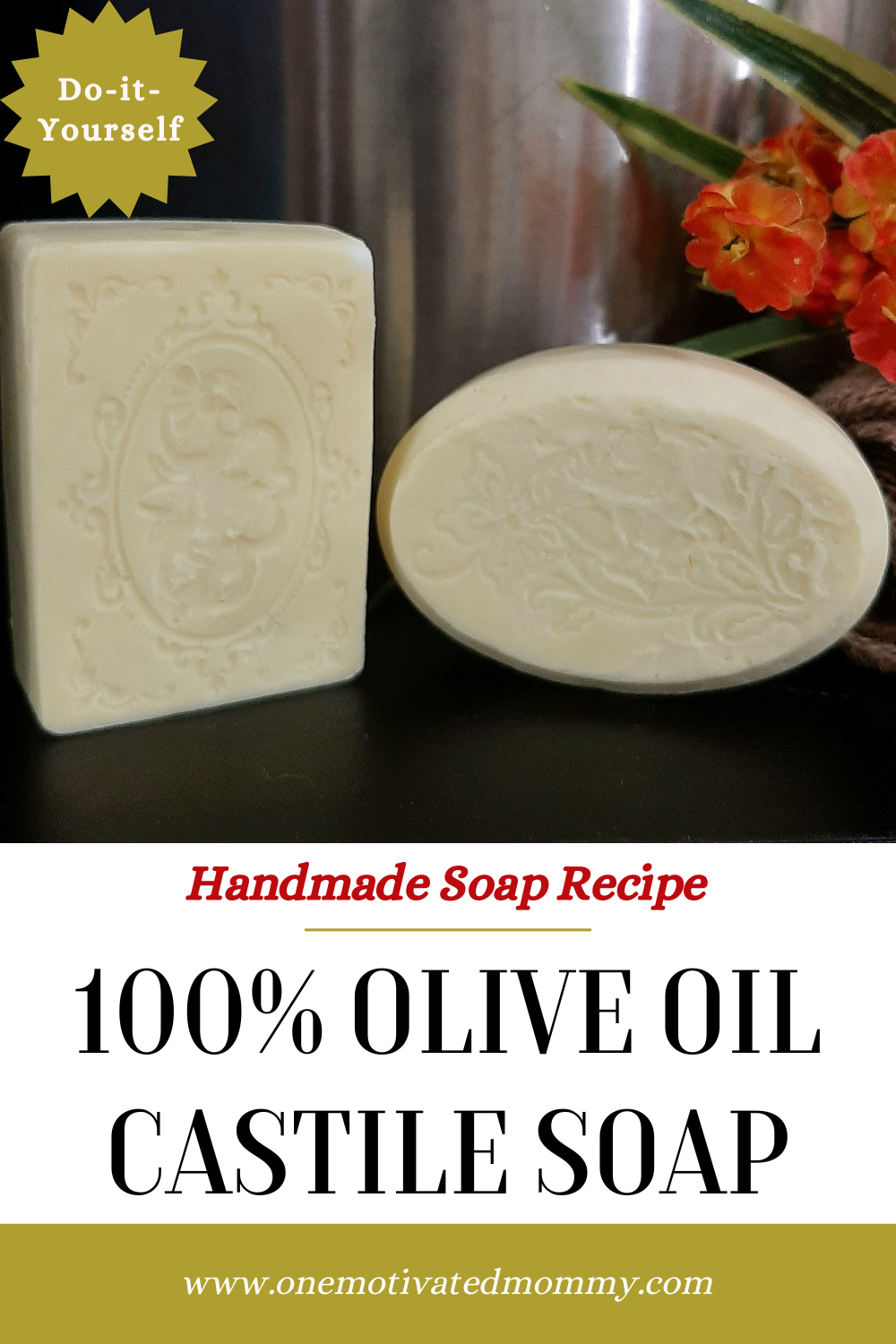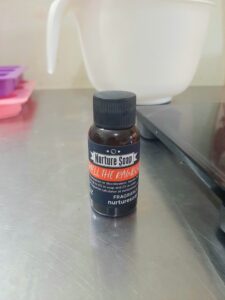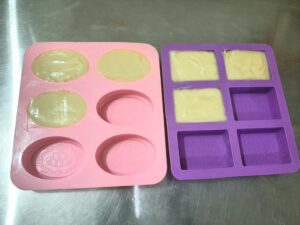Castile Soap or Jabón de Castilla, is a soap that is made with 100% olive oil.
Known for its gentleness, moisturizing properties and silky lather, it promotes supple skin and is especially beneficial for sensitive and mature skin.
Castile soap is ideal for beginners to make as pure olive oil doesn’t trace as quickly as other oils and would give a new soap maker time to understand the mixing process and observe trace.
A Rich Historical Origin
Castile dates back to the 12th century when it was first produced. At that time, it was created as an alternative to the highly prized Aleppo soap, which contained laurel and olive oil. Mediterranean soapmakers, lacking access to laurel oil, used olive oil as it was in abundance, to create a 100% olive oil soap.
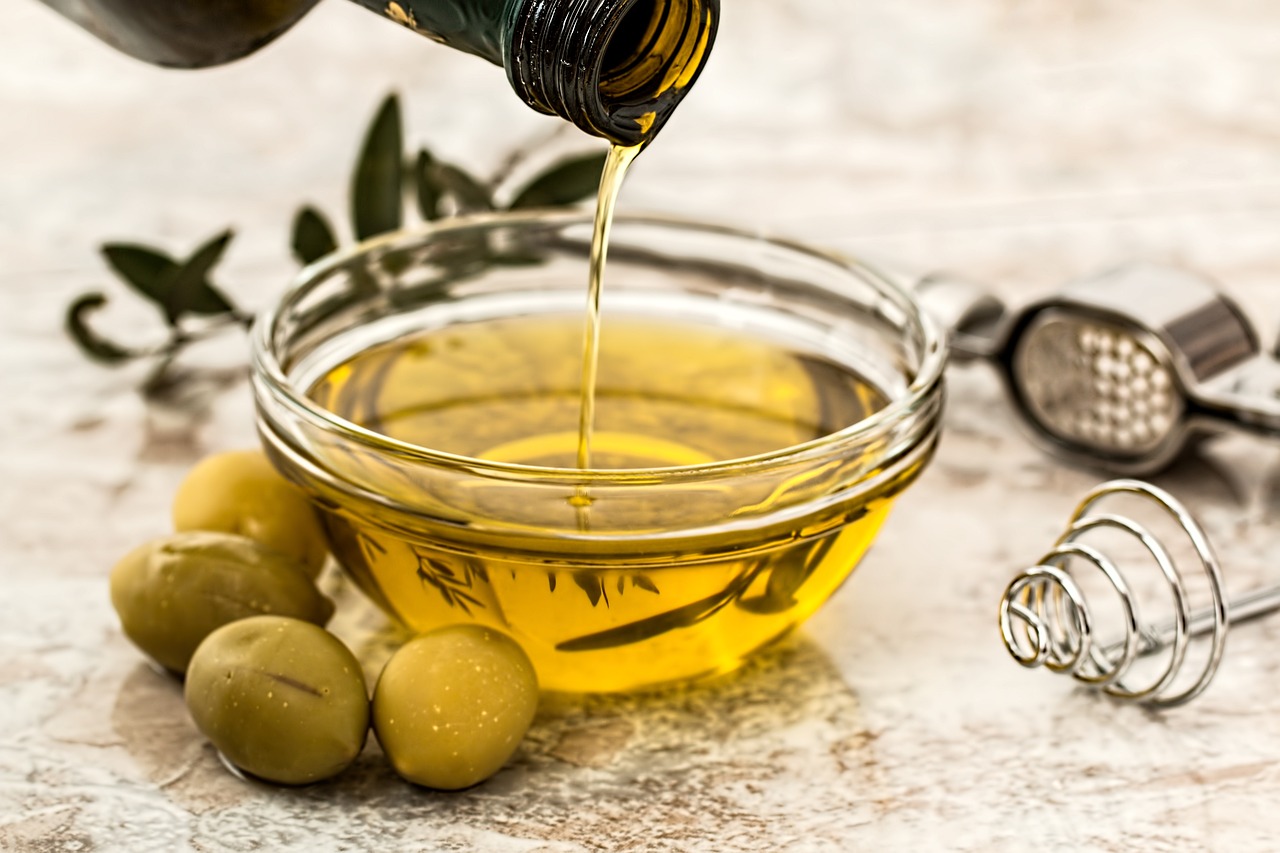
Cost Considerations
Olive oil can be expensive, but olive pomace oil, made from the residue left after producing virgin olive oil, is a cost-effective alternative. Ensure the product is 100% olive-derived and not a blend of oils.
Patience Pays Off
Castile soap requires patience as it needs to age for the best results. I have found that Castile soaps that have aged for more than 6 months are superior in hardness, longevity in the shower and overall quality. However, you can start using your soap after 2 months and compare the quality over time.
Recipe and Instructions
Equipment
Safety goggles and gloves
Stainless steel or heat-safe bowl
Stainless steel mixing spoons
Spatula
Non-reactive mixing bowl*
Glass or ceramic container
Digital kitchen scale
Stick blender
Soap moulds
*The mixing bowl should be at least twice the volume of the oil and water combined. Avoid aluminium, copper or tin as these react with lye. Use stainless steel or high-quality plastic.
Ingredients
-
-
- 16 oz Olive oil
- 4.86 oz Distilled water (20% water discount applied)
- 2.06 oz Sodium Hydroxide
- 0.5 oz Fragrance or Essential oil (optional)
-
All measurements are by weight.
Water discount
A 20% water discount is applied in this recipe to enable the soap batter to thicken faster and reduce the time taken for the soap to solidify. This means 20% less water than what is usually needed to dissolve the sodium hydroxide.
This recipe is calculated using a 5% superfat.
This gentle soap can be left unscented or your favourite fragrance or essential oil can be added. I usually leave my Castile soaps unscented but this time I wanted to try ‘Smell The Rainbow’ fragrance oil from Nurture Soap.
Instructions to Make Castile Soap
Safety
Safety is paramount when working with sodium hydroxide!
Wear safety goggles, rubber gloves and long-sleeved clothing to protect your eyes and skin. Ensure that you are working in a well-ventilated area and that there are no children, pets or distractions around.
Gather all your tools and ingredients.
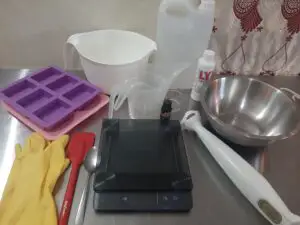
Weigh the water in a stainless steel or heat-proof container.
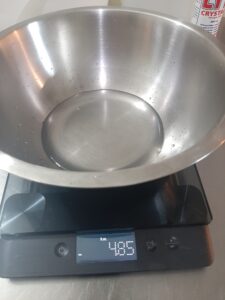
Next, weigh the sodium hydroxide.
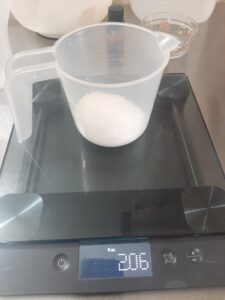
In a well-ventilated area, carefully add the sodium hydroxide to the water, in that order. Always add the sodium hydroxide to the water, not the water to the lye, to prevent a violent reaction.
Stir with a stainless spoon until fully dissolved. The mixture will heat up and emit fumes, be careful not to inhale them.
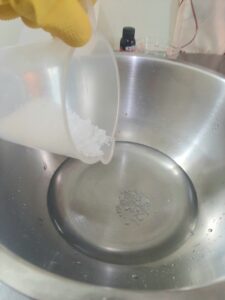
Once the lye is dissolved, set it aside in a safe place to cool.
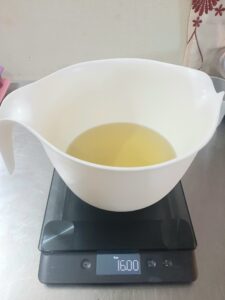
Next, in the mixing bowl, weigh the olive oil.
If you are using a fragrance or essential oil, weigh it in a glass, ceramic or fragrance-safe container.
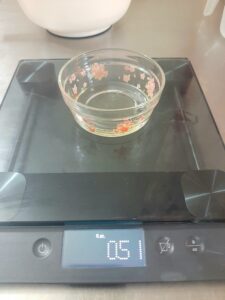
Now clear away the tools and ingredients that are no longer needed and prepare to make your Castile soap.
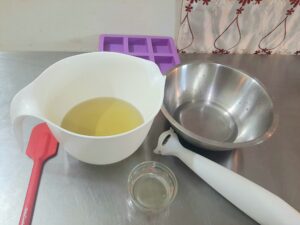
Carefully pour the lye solution into the olive oil.

Pulse and stir the mixture using the immersion or stick blender until it reaches a light trace as pictured below.
Trace is when the soap mixture starts to thicken to a pudding-like consistency and leaves an imprint or trace on the top of the batter if drizzled upon itself. At this point, the mixture has emulsified and will resist separating back into layers of water and oil.
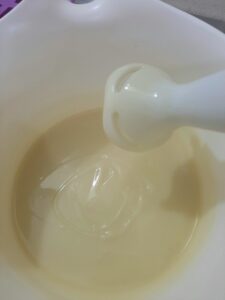
Next, add the fragrance or essential oil and blend with the immersion blender until fully incorporated.
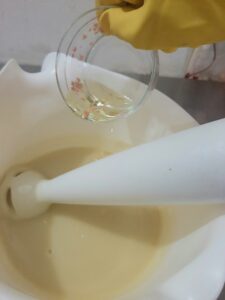
Continue blending and stirring the soap batter until it reaches a medium trace and pour it into your mould.

Allow the soap to rest in the mould for 48 to 72 hours. Castile soap usually takes longer than soaps made with harder oils and butters to solidify in the mould. If it is still too soft to remove from the mould after this time, allow it to rest for another day or two.
Once solid, remove the soap from the mould or cut it into bars if using a loaf mould.
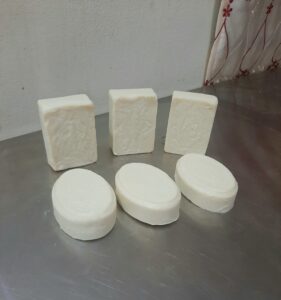
Place them in a cool, dry, well-ventilated place to cure for at least 8 to 12 weeks before using.
Store the Castile soap bar on a draining soap dish to keep it dry, when not in use.
Shelf life
Handmade soaps tend to have a shelf life similar to the oils used. Olive oil has a shelf life of about 2 years so use this as guidance for the shelf life of your Castile soap.
There you have it! A true classic in soapmaking that is natural, perfect for all skin types and can be customized with your favourite scents for the entire family. If you try this soap, share your experience in the comments. I’d love to hear how your soap turns out.
The wait is worth it! Happy Soaping! 🙂
